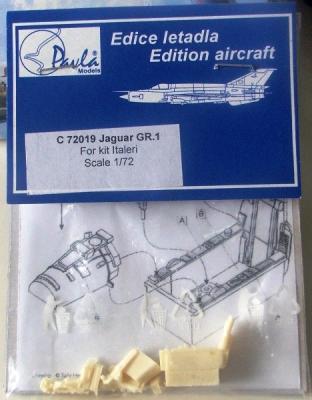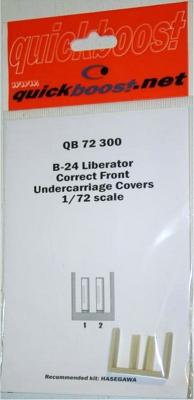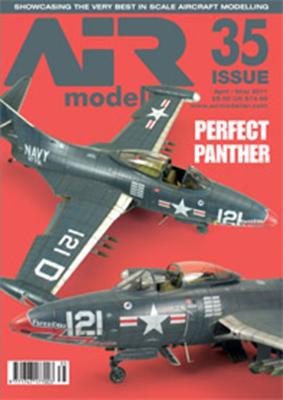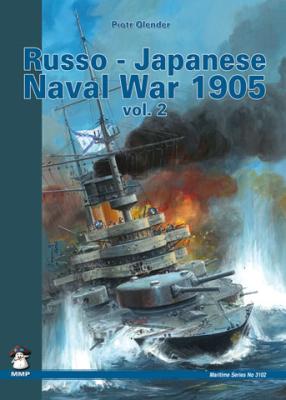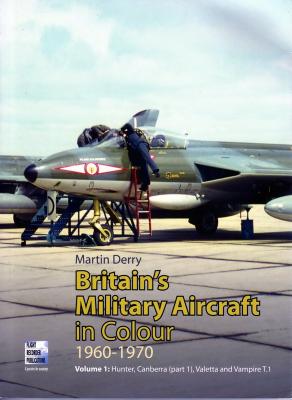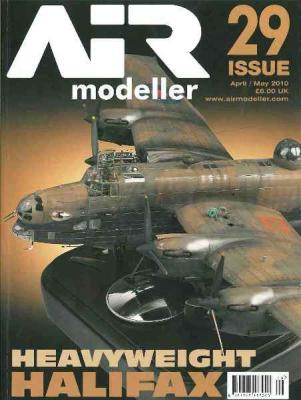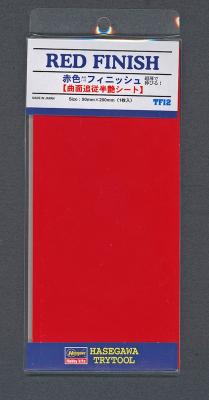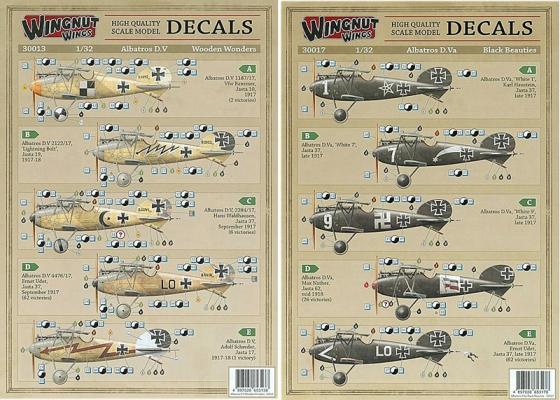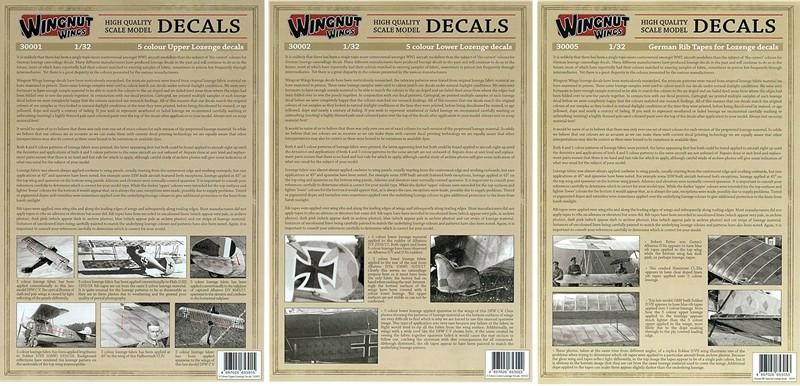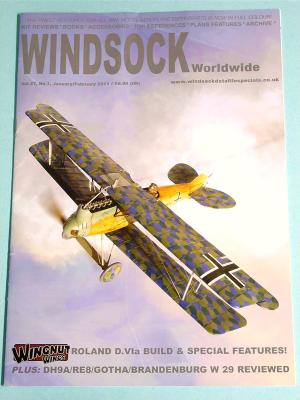The cockpit set comes in four cream colored pieces – tub, seat, stick and panel/coaming. The parts are nicely detailed and well-cast, if only a tad rough on the surface. The texture was not an issue with parts this small and I did nothing special to prepare the parts for painting, including skipping the washing stage often recommended. The parts were prepared simply by cutting them from their casting blocks.
What's New
Quickboost just added another fine addition to their list of after market parts. This time they have done the much needed and awaited correction to the Hasegawa B-24 Liberator, the front undercarriage doors. It is up to their usual standards; molded in a cream colored resin, smooth, seamless and bubble free. One thing of note is that they are really easy to remove from the mold block because of a nice perforation. It only takes a couple of minutes with a saw blade and a gentle touch to remove them. Just make sure not to get too over zealous or the part may snap.
Contents
- Cover Article…"The Perfect Panther”" – F9F-2 by Zdenek Sebesta on the Trumpeter 1/48th scale kit.
- Hurricane MK1(early) – Pacific Miniatures kit by Jamie Haggo
- The Martin Baltimore Special Hobbys 1/72nd kit by Andrea Vignocchi
- Photo Gallery of the Baltimore by David Doyle
- Hellenic Air Force T-2 Buckeye (2Bobs 1/48th kit) by Periklis Salessiotis
- Bell P-39 Airacobra (MPar 1/32nd) by Daniel Zamarbide
- Air Born…A listing of New Releases
- SM79 “Sparviero” (Classic Airframes 1/48th) by Jean Barby
My thanks to Roger Wallsgrove, Editor-in-Chief of Mushroom Model Publications, who provided this review sample. I have had the pleasure of meeting him and his team at Nationals.
I have always been interested in aircraft colors and markings. My library is full of books from Karl Ries, Monogram, Ducimus, Harleford and many others. I had expected this book to be a similar tome devoted to three view drawings, color call-outs and marking drawings. The authors would provide the data and then choose a photo to illustrate their information.
This book is different. It is a collection of very interesting photos, most from the Newark Air Museum. The Photos illustrate a great variety of color and markings of the four covered aircraft, during the target timeframe. Aircraft that are covered include the Hunter, the Canberra (part 1), the Valetta and the Vampire T.11. All of the photos appear to have been taken in the UK and the aircraft are primarily RAF aircraft.
This publication is edited in the UK and is dedicated to airplane models, as the title implies. It is 65 pages and printed in full color. There are 65 pages in an issue, this one in particular having 6 pages devoted to product reviews and the remaining 59 dedicated to the 7 outstanding models featured in the issue. It is printed on high quality heavy weight paper with a glossy finish. The cover is on heavier bond paper and should hold up well with repeated viewing.
This issue features the following builds:
Most model builders think of useful small hobby tools when they hear someone say TRITOOL. However, this TRITOOL item is a fundamental building material for use in scratch building, customizing or finishing models. It is a unique self-adhesive sheet of thin pre-finished foil (film) that is intended to replicate red finishes on aircraft or other models (other primary colors are available, such as white, black, yellow, orange, blue, etc.). The package contains one 90mm x 200mm sheet of material that has a red semi-gloss finish. It appears to be the correct color for reproducing a Japanese Hinomaru.
For those of us who love nothing better than trying to figure out where all of those flying wires go to and how to attach them, New Zealand’s Wingnut Wings has been a blessing and the best thing that has happened to our hobby in many years. 1/32ndscale is a fantastic scale for WWI aircraft, yet they don’t take up a lot of display room. The quality of the Wingnut Wings’ releases is still hard to digest, especially at their very reasonable price and free shipping, to boot. To complement their fantastic kits, they have now started releasing some equally stunning decals, all of which are printed in Italy by Cartograf. The registry is without fault; they are thin, and Wingnut Wings even recommends that a hair dryer be used to get their decals to conform to the model’s surface, instead of setting solutions. Amazingly, it works. Why, I don’t know, but there’s no cleanup afterwards.
Editor's note: Sheet no.s 30001 and 30002 - $12.50 each; 30005 - $7.50
For those of us who love nothing better than trying to figure out where all of those flying wires go to and how to attach them, New Zealand’s Wingnut Wings has been a blessing and the best thing that has happened to our hobby in many years. 1/32ndscale is a fantastic scale for WWI aircraft, yet they don’t take up a lot of display room.
If you have a passion for WWI aircraft this is the magazine for you. In this installment Lance Krieg walks us thru scratch building wings in the Harry Woodman approach where the wing core is cut and shaped from either balsa or basswood or even plastic stock and is then covered with a plastic skin. The process is thoroughly covered in five pages with 42 photos showing wing fabrication as well as the aft flying surfaces. Variants to the Woodman approach are also considered and shown as well, very useful addition to one’s knowledge that may be of use later.

